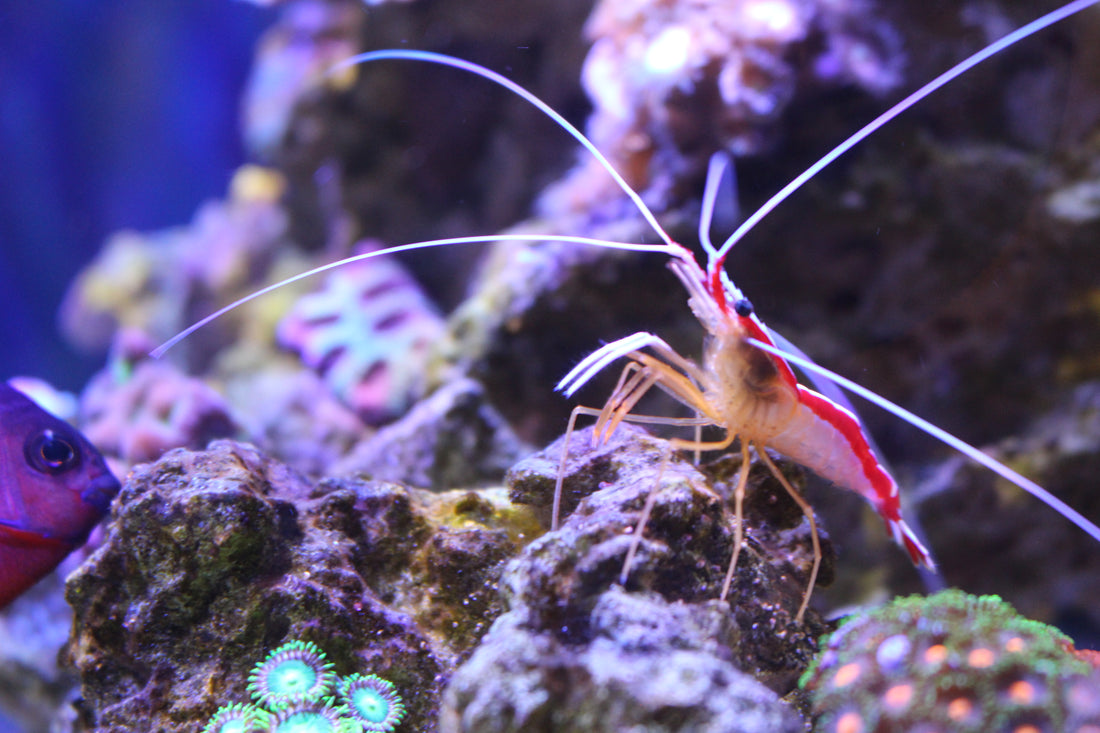
The Fundamental Rules of Aquascaping: A Beginner's Guide
Share
Aquascaping is the art of crafting beautiful underwater landscapes. Whether you're aiming for a serene, nature-inspired design or a vibrant, colorful display, understanding the fundamental principles of aquascaping is key to creating a balanced and visually appealing aquarium. In this guide, we'll explore the essential rules to help you create your own aquatic masterpiece.
1. Start with a Vision
Every great aquascape begins with a plan. Think about the style or theme you want to achieve. Do you prefer a minimalist design with clean lines or a lush, natural look filled with plants? Sketching your ideas or using design tools can help you visualize and refine your concept before you start building.
2. Apply the Rule of Thirds
Borrowed from art and photography, the rule of thirds is a simple way to create a balanced layout. Imagine your aquarium divided into three equal sections horizontally and vertically. Position key elements like rocks, driftwood, or standout plants at the intersections of these lines to naturally draw attention to focal points.
3. Build a Strong Foundation
The hardscape—elements like rocks, driftwood, or other structures—sets the stage for your aquascape. Choose materials that are safe for aquariums and complement your chosen style. For instance:
- Smooth stones or minimalist arrangements work well for a modern look.
- Driftwood and varied rocks give a natural, earthy feel.
Arrange these pieces thoughtfully to create depth and flow, avoiding overly symmetrical layouts for a more organic appearance.
4. Create Depth and Layers
Depth is an important element of any aquascape. Use these layering techniques to enhance the visual appeal:
- Foreground: Low-growing plants or sand create an open, clean look at the front.
- Midground: Medium-height plants or decorative elements add structure.
- Background: Taller plants or dramatic rocks create a sense of height and enclosure.
Sloping the substrate (the material covering the bottom of the tank) upward from the front to the back can enhance the illusion of depth.
5. Achieve Balance
Balance doesn’t mean symmetry—it’s about creating harmony between the different parts of your design. You can achieve this by:
- Using an odd number of focal points, as this feels more natural.
- Mixing dense areas of plants or materials with open spaces for contrast.
6. Choose Plants Wisely
Plants are the heart of any aquascape, bringing life and color to the design. Consider how much light, maintenance, and space each plant needs. If you’re new to aquascaping, hardy plants like mosses, ferns, or low-maintenance grasses are great choices. More experienced aquascapers might experiment with colorful or delicate plant varieties.
7. Use Proportions Thoughtfully
Avoid overcrowding your tank. A design with too many elements can feel chaotic, while an uncluttered tank allows focal points and decorative details to shine. Striking the right balance between plants, hardscape, and open space ensures a visually pleasing and functional environment.
8. Play with Color and Texture
Contrast in color and texture can make your aquascape more interesting:
- Combine bright greens with darker plants for variety.
- Add small pops of color, such as red plants or vibrant décor, to highlight key areas.
- Mix different leaf shapes and sizes for visual diversity.
9. Prioritize Lighting and Maintenance
Good lighting is essential for showcasing your aquascape and ensuring healthy plant growth. Choose lighting suited to your setup and regularly monitor your tank’s water quality. Routine maintenance, like trimming plants and cleaning algae, helps keep your aquarium looking its best.
10. Be Patient
Creating a stunning aquascape takes time. Plants need weeks or months to grow into their final shape, and the tank may evolve as you refine your design. Regular care and adjustments will ensure your aquarium stays healthy and beautiful.
11. Add Aquatic Life Carefully
Fish, shrimp, and snails can bring movement and personality to your aquascape. Choose species that are compatible with your setup and won’t disturb your design or plants. Adding the right aquatic life can turn your aquascape into a thriving, dynamic ecosystem.
Conclusion
Aquascaping is a rewarding way to combine creativity with a love for nature. By following these fundamental rules, you can design an aquarium that is not only visually stunning but also balanced and harmonious. Whether you’re new to aquascaping or have years of experience, the key is to plan thoughtfully, experiment with different elements, and enjoy the process of bringing your underwater vision to life.
Ready to start your aquascaping journey? Whether you're designing your first tank or enhancing an existing setup, the right tools and resources can make all the difference. Explore options, get inspired, and dive into the art of aquascaping today!
